INSTITUT SUPERIEUR D'ANTHROPOLOGIE
INSTITUTE OF ANTHROPOLOGY
ONLINE COURSES / COURS A DISTANCE
WINTER TERM : JANUARY 2014
REGISTER NOW
OMAN – 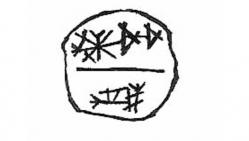 Dibba - First cuneiform writing of the Mesopotamia civilization was found during archaeological excavations being carried out by the Ministry of Heritage and Culture of Oman in Dibba, Musandam. A necklace or a talisman with the design of an eye was found during the excavations, which the Ministry of Heritage and Culture is carrying out in association with the University of Bologna, Italy. In Mesopotamian language, letters "di, Jo, la" are written on it. It is the name of the deity of healing and cure of the Mesopotamian period. It seemed that the people were wearing this necklace to prevent some illness, archaeologists said. It was believed in the second millennium BC that the deity 'La Jolla' was the one who cured diseases. The belief in the Babylonian civilisation dated back to the second half of the second millennium BC. Sultan Bin Saif Al Bakri, director of the excavations and archaeological studies at the Ministry of Heritage and Culture, said that the findings from this archaeological site were one of the most important recent archaeological discoveries in the Sultanate of Oman. "This archaeological item, which the team has found, indicates the richness and civilisational depth of Oman during the bronze and iron age. It tells us about Oman's relations with the civilisations of the Mesopotamian period." he added.
Dibba - First cuneiform writing of the Mesopotamia civilization was found during archaeological excavations being carried out by the Ministry of Heritage and Culture of Oman in Dibba, Musandam. A necklace or a talisman with the design of an eye was found during the excavations, which the Ministry of Heritage and Culture is carrying out in association with the University of Bologna, Italy. In Mesopotamian language, letters "di, Jo, la" are written on it. It is the name of the deity of healing and cure of the Mesopotamian period. It seemed that the people were wearing this necklace to prevent some illness, archaeologists said. It was believed in the second millennium BC that the deity 'La Jolla' was the one who cured diseases. The belief in the Babylonian civilisation dated back to the second half of the second millennium BC. Sultan Bin Saif Al Bakri, director of the excavations and archaeological studies at the Ministry of Heritage and Culture, said that the findings from this archaeological site were one of the most important recent archaeological discoveries in the Sultanate of Oman. "This archaeological item, which the team has found, indicates the richness and civilisational depth of Oman during the bronze and iron age. It tells us about Oman's relations with the civilisations of the Mesopotamian period." he added.
http://www.timesofoman.com/News/Article-25661.aspx
ROYAUME UNI – 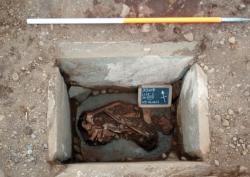 Machars farm - An archaeological investigation on a Machars farm has uncovered three rare Bronze Age cists or burial chambers, one with the remains of a young child in it. The investigation began after a stone cist burial was accidentally damaged by a plough at Blairbuy Farm in April 2012. shortly afterwards a team from GUARD Archaeology was sent to investigate through Historic Scotland. Post-excavation analysis on a skeleton found in one of the cists confirmed the remains of a juvenile between nine and 12 years old buried there. The child had suffered malnutrition and a radiocarbon date obtained from the left ulna (elbow bone) placed the child’s death around 4000 years ago, in the early Bronze Age (2027-1886 BC). The team uncovered two other empty cists that had never been used for burial suggesting they were constructed in anticipation of use, rather than as and when required. The archaeologists said: ”The signs of malnutrition on the remains discovered may indicate a wider problem for the community at that time, perhaps a food shortage or the onset of disease and this is a possible explanation why other graves were prepared. But the fact that two cists were not used suggests the group or individuals may have move away from the area. “This is rare evidence of the possible movement of groups and the loss or abandonment of ritual sites in an otherwise settled landscape during the Bronze Age period. “This work also shows that we cannot assume that the construction of the cists we discovered is necessarily contemporary with the burial of the bodies contained therein.”
Machars farm - An archaeological investigation on a Machars farm has uncovered three rare Bronze Age cists or burial chambers, one with the remains of a young child in it. The investigation began after a stone cist burial was accidentally damaged by a plough at Blairbuy Farm in April 2012. shortly afterwards a team from GUARD Archaeology was sent to investigate through Historic Scotland. Post-excavation analysis on a skeleton found in one of the cists confirmed the remains of a juvenile between nine and 12 years old buried there. The child had suffered malnutrition and a radiocarbon date obtained from the left ulna (elbow bone) placed the child’s death around 4000 years ago, in the early Bronze Age (2027-1886 BC). The team uncovered two other empty cists that had never been used for burial suggesting they were constructed in anticipation of use, rather than as and when required. The archaeologists said: ”The signs of malnutrition on the remains discovered may indicate a wider problem for the community at that time, perhaps a food shortage or the onset of disease and this is a possible explanation why other graves were prepared. But the fact that two cists were not used suggests the group or individuals may have move away from the area. “This is rare evidence of the possible movement of groups and the loss or abandonment of ritual sites in an otherwise settled landscape during the Bronze Age period. “This work also shows that we cannot assume that the construction of the cists we discovered is necessarily contemporary with the burial of the bodies contained therein.”
http://www.gallowaygazette.co.uk/news/local-headlines/bronze-age-graves-discovered-near-monreith-1-3189212
TURQUIE – 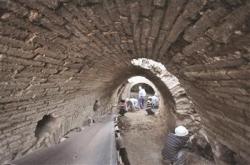 Metropolis - Archaeological excavations in the ancient city of Metropolis, situated in İzmir, revealed a 40-meter corridor, giving clues about life 2,000 years ago.According to a statement by Sabancı Foundation, which supports the project together with Torbalı Municipality and the Association of Metropolis Lovers (MESEDER), a 40-meter corridor was unearthed during the excavations that have been continuing in the bathing and sports sections of the site. The brick-vaulted corridors, which had been built parallel to the northern, western and southern walls, were discovered in a well-preserved state, revealing aspects of social life 2,000 years ago. Archaeologists believe that these kinds of structures were used as service corridors by servants working in Roman baths. Excavations also revealed furnaces built in the same parallel with the pools of the bath.
Metropolis - Archaeological excavations in the ancient city of Metropolis, situated in İzmir, revealed a 40-meter corridor, giving clues about life 2,000 years ago.According to a statement by Sabancı Foundation, which supports the project together with Torbalı Municipality and the Association of Metropolis Lovers (MESEDER), a 40-meter corridor was unearthed during the excavations that have been continuing in the bathing and sports sections of the site. The brick-vaulted corridors, which had been built parallel to the northern, western and southern walls, were discovered in a well-preserved state, revealing aspects of social life 2,000 years ago. Archaeologists believe that these kinds of structures were used as service corridors by servants working in Roman baths. Excavations also revealed furnaces built in the same parallel with the pools of the bath.
http://www.hurriyetdailynews.com/ancient-corridor-reveals-roman-social-life-traces.aspx?pageID=238&nID=57852&NewsCatID=375
VIET NAM – 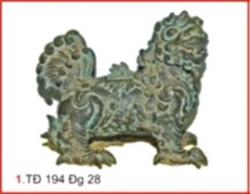
 Hue - Thieves broken into the tomb of Emperor Tu Duc, in Xuan Thuy Ward, Hue City on the morning of November 8 and stole a lot of valuable antiquities. The stolen objects include two bronze lion’s whelps of 55 - 60cm long, 30cm high, weighed 40-50kg/unit and four ceramic ornamental jars of 40cm high.The five stolen artifacts are very rare, dating back to the reign of Emperor Tu Duc.
Hue - Thieves broken into the tomb of Emperor Tu Duc, in Xuan Thuy Ward, Hue City on the morning of November 8 and stole a lot of valuable antiquities. The stolen objects include two bronze lion’s whelps of 55 - 60cm long, 30cm high, weighed 40-50kg/unit and four ceramic ornamental jars of 40cm high.The five stolen artifacts are very rare, dating back to the reign of Emperor Tu Duc.
http://english.vietnamnet.vn/fms/art-entertainment/88995/thieves-break-into-tomb-of-king-tu-duc--taking-away-valuable-antiques.html
ROYAUME UNI - 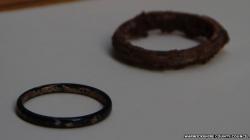 Witherley - Two bracelets, believed to be "at least" 1,600 years old have been found in a Roman coffin.The jet bracelets were found on Monday buried in silt inside the coffin which was discovered in a field in Witherley, Leicestershire last month. Archaeologists from Warwickshire who are studying the find said one bracelet is in good condition, while the other needs "immediate conservation". They said they have not ruled out the possibility of further finds.Stuart Palmer, business manager of Archaeology Warwickshire, said: "Both of the bracelets were in the bottom of the coffin. One of them has left its imprint on the coffin's leaden base. "One of them is in quite good condition but the other has not been so well preserved. It was buried in a part of the coffin that had cracked and it has a number of cracks in it." He said the bracelets were "very small" and "very cute". "They were both found in positions in the coffin that could indicate they were on an arm but there's a possibility they could also have been worn as necklaces or even braded through hair," he added. Archaeologists believe the coffin, measuring approximately 3ft (0.9m), belonged to the child of a wealthy family and represents an early example of Christian burial.
Witherley - Two bracelets, believed to be "at least" 1,600 years old have been found in a Roman coffin.The jet bracelets were found on Monday buried in silt inside the coffin which was discovered in a field in Witherley, Leicestershire last month. Archaeologists from Warwickshire who are studying the find said one bracelet is in good condition, while the other needs "immediate conservation". They said they have not ruled out the possibility of further finds.Stuart Palmer, business manager of Archaeology Warwickshire, said: "Both of the bracelets were in the bottom of the coffin. One of them has left its imprint on the coffin's leaden base. "One of them is in quite good condition but the other has not been so well preserved. It was buried in a part of the coffin that had cracked and it has a number of cracks in it." He said the bracelets were "very small" and "very cute". "They were both found in positions in the coffin that could indicate they were on an arm but there's a possibility they could also have been worn as necklaces or even braded through hair," he added. Archaeologists believe the coffin, measuring approximately 3ft (0.9m), belonged to the child of a wealthy family and represents an early example of Christian burial.
http://www.bbc.co.uk/news/uk-england-coventry-warwickshire-24919777
FRANCE – 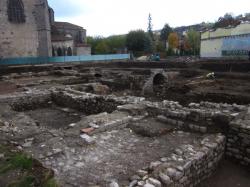 Aurillac - Une découverte archéologique historique à Aurillac. Les vestiges très bien conservés d'un monastère du 12e siècle ont été découverts à quelques mètres au sud de l’Abbatiale Saint-Géraud. Cette trouvaille remarquable a pu être réalisée lors de fouilles préalables à la construction de logements sur l’îlot Saint-Géraud…Aucune construction n’avait été réalisée à cet endroit d’Aurillac, où seul un jardin avait pris place au 17e. De quoi expliquer le bon état des ruines, qui s'élèvent sur 2 mètres. Ces vestiges seraient plus importants que ceux de l’abbaye de Cluny, la plus connue au monde. L’annonce fait le buzz dans la communauté scientifique. Par ailleurs, jeudi, les archéologues ont trouvé des sépultures sur le site. Ce vendredi, les responsables du service Régional d'Archéologie doivent déterminer la portée historique de cette découverte. L’impact sur le projet urbanistique en cours sur l’îlot Saint-Géraud sera aussi étudié.
Aurillac - Une découverte archéologique historique à Aurillac. Les vestiges très bien conservés d'un monastère du 12e siècle ont été découverts à quelques mètres au sud de l’Abbatiale Saint-Géraud. Cette trouvaille remarquable a pu être réalisée lors de fouilles préalables à la construction de logements sur l’îlot Saint-Géraud…Aucune construction n’avait été réalisée à cet endroit d’Aurillac, où seul un jardin avait pris place au 17e. De quoi expliquer le bon état des ruines, qui s'élèvent sur 2 mètres. Ces vestiges seraient plus importants que ceux de l’abbaye de Cluny, la plus connue au monde. L’annonce fait le buzz dans la communauté scientifique. Par ailleurs, jeudi, les archéologues ont trouvé des sépultures sur le site. Ce vendredi, les responsables du service Régional d'Archéologie doivent déterminer la portée historique de cette découverte. L’impact sur le projet urbanistique en cours sur l’îlot Saint-Géraud sera aussi étudié.
http://www.radio-totem.net/actualite/journal/cantal/article-77132-aurillac-une-decouverte-archeologique-de-taille/?page=&filtre=all
PEROU – 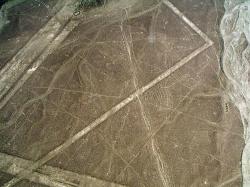 Ica - Illegal use and occupation of land near Ica is worrying cultural and archaeological authorities in the area. According to El Comercio, ‘invasores’ (‘invaders’) have taken possession of two large tracts of land in a protected area. El Comercio reports that several groups of lines and trapezoid shapes have been destroyed by machinery, and the occupants of the land have also constructed a stone fence, as well as divided the territory into lots, abandoned equipment there, and vandalized the area. El Comercio reports that cultural authorities are unsure what to do in the face of such destruction. “We’re surprised by the indifference shown by the ‘invasores’ about preserving this legacy,” said Giuseppe Orefici, Director of the Center for Pre Columbian Archaeological Studies and the Nasca Project. Orefici also told El Comercio that these kinds of “invasions” have become very common in the area. According to Orefici, the problem isn’t just that people come and take the land— rather, it’s that no one seems to be doing anything about it. “And adding to the illegal action [of taking the protected land], you have to add the indifference of the authorities who are supposed to be protecting the cultural heritage […] they generally don’t act until well after the damage has been done, and it’s irreversible,” explained the archaeologist. Orefici is fed up with inaction. “It’s imperative that the cultural authorities take on their responsibility, that they mark off and put of signs denoting archaeological sites […] and take action towards sanctioning the ‘invasores,’ because they keep destroying protected sites in Nasca with impunity,” said Orefici.
Ica - Illegal use and occupation of land near Ica is worrying cultural and archaeological authorities in the area. According to El Comercio, ‘invasores’ (‘invaders’) have taken possession of two large tracts of land in a protected area. El Comercio reports that several groups of lines and trapezoid shapes have been destroyed by machinery, and the occupants of the land have also constructed a stone fence, as well as divided the territory into lots, abandoned equipment there, and vandalized the area. El Comercio reports that cultural authorities are unsure what to do in the face of such destruction. “We’re surprised by the indifference shown by the ‘invasores’ about preserving this legacy,” said Giuseppe Orefici, Director of the Center for Pre Columbian Archaeological Studies and the Nasca Project. Orefici also told El Comercio that these kinds of “invasions” have become very common in the area. According to Orefici, the problem isn’t just that people come and take the land— rather, it’s that no one seems to be doing anything about it. “And adding to the illegal action [of taking the protected land], you have to add the indifference of the authorities who are supposed to be protecting the cultural heritage […] they generally don’t act until well after the damage has been done, and it’s irreversible,” explained the archaeologist. Orefici is fed up with inaction. “It’s imperative that the cultural authorities take on their responsibility, that they mark off and put of signs denoting archaeological sites […] and take action towards sanctioning the ‘invasores,’ because they keep destroying protected sites in Nasca with impunity,” said Orefici.
http://www.peruthisweek.com/news-nazca-archaeological-sites-in-danger-near-ica-peru-101436
USA –  Savannah - U.S. Navy divers successfully recovered a 64-square foot section of the Savannah-built Civil War ironclad warship CSS Georgia from the bottom of the Savannah River Tuesday evening.The removal and preservation of the historic ship is part of the mitigation involved in the Savannah Harbor Expansion Project, which will deepen the Savannah River channel from its current 42 feet to 47 feet.Divers worked in strong currents with near-zero visibility during the past week to assess the possibility of lifting a small piece of the Confederate ship’s casemate for archeological testing. The Confederate navy scuttled the CSS Georgia in 1864 as Union troops approached Savannah. The iron-covered ship remained on the river bottom until 1969 when a dredge removing sediment from the shipping channel struck a portion of the ship, according to Julie Morgan, staff archeologist for the Corps’ Savannah District.A brief recovery effort in the 1980s removed two cannon, a few cannon balls and other artifacts.
Savannah - U.S. Navy divers successfully recovered a 64-square foot section of the Savannah-built Civil War ironclad warship CSS Georgia from the bottom of the Savannah River Tuesday evening.The removal and preservation of the historic ship is part of the mitigation involved in the Savannah Harbor Expansion Project, which will deepen the Savannah River channel from its current 42 feet to 47 feet.Divers worked in strong currents with near-zero visibility during the past week to assess the possibility of lifting a small piece of the Confederate ship’s casemate for archeological testing. The Confederate navy scuttled the CSS Georgia in 1864 as Union troops approached Savannah. The iron-covered ship remained on the river bottom until 1969 when a dredge removing sediment from the shipping channel struck a portion of the ship, according to Julie Morgan, staff archeologist for the Corps’ Savannah District.A brief recovery effort in the 1980s removed two cannon, a few cannon balls and other artifacts.
http://savannahnow.com/exchange/2013-11-13/divers-recover-piece-css-georgia#.UoUXuhq9TP1